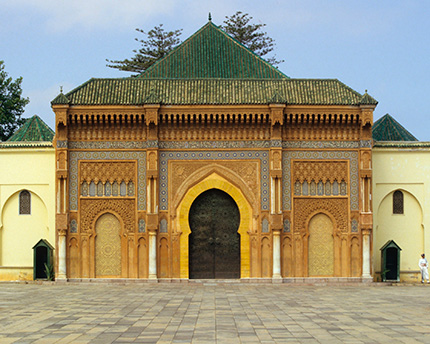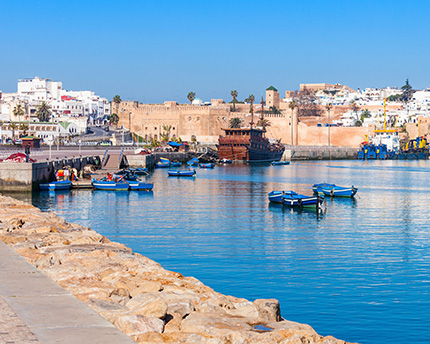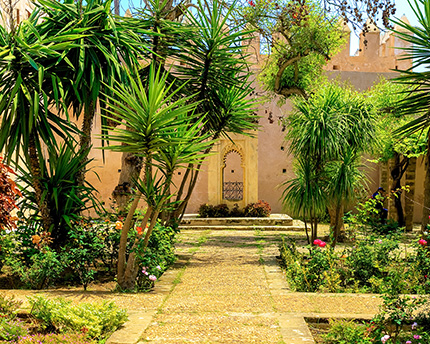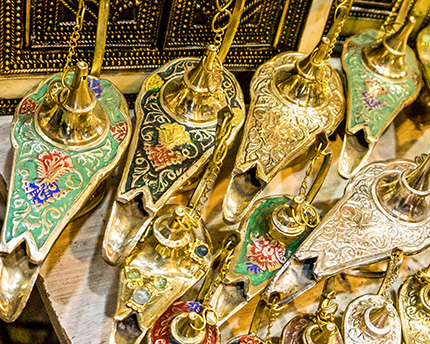Situated on the Atlantic coast at the mouth of the Bou Regreg River, the city of Rabat is a real historical treasure and has been the capital of the Kingdom of Morocco since 1956. It’s a destination with all kinds of attractions from different eras, including such iconic sites as the Hassan Tower, the Chellah Necropolis, the Oudayas Kasbah and the Medina of Rabat itself, among many others.
But this dynamic North African capital also offers a more modern side, represented by an eclectic artistic and cultural scene, featuring several festivals, art galleries and interesting museums, such as the MMVI – Mohammed VI Museum of Modern and Contemporary Art. It is also noteworthy for its abundant gastronomic, commercial and leisure offering; for its fantastic beaches, and even for its commitment to sustainability, evident in its many green spaces and new infrastructures (such as the Rabat-Salé tram lines).
It is precisely against this great backdrop, which swings between tradition and modernity, that the iconic Dar al-Majzén, Rabat’s Royal Palace, appears as a symbol of the city and the country as a whole.
Residence of kings and sultans: history and architecture
Since the consolidation of the city as the capital of the Alaouite dynasty at the end of the 18th century, Rabat began to undergo a transformation, including the construction of a grand palace for the then Sultan Mohammed III. It was not until the mid-19th century (1864) under the reign of Mohammed IV, however, that the original royal residence and its surroundings were to undergo major modifications to give it its present appearance and layout.
The Royal Palace of Rabat sits within the walled enclosure of Touarga, a separate district within the Moroccan capital itself, which also contains several government entities and official residences, as well as the 18th-century Ahl Fâs Mosque and the Méchouar, a vast esplanade that precedes the main entrance to the Palace and is regularly used for ceremonies, military parades and special events.

Architecturally speaking, Dar al-Makhzen is a good example of the blending of typical Moroccan elements with Arab and Andalusian-influenced architecture. The palace has several sections of different proportions (in the style of traditional houses, but with larger dimensions of course), some crowned with hipped roofs and distinctive green tiles, others with imposing crenellated walls. It also has several terraces, ornate arcades and narrow latticed windows.
The most spectacular feature of the complex, however, is undoubtedly its grand entrance gateway: a huge pointed horseshoe arch with a doorway that offers extraordinary examples of refined local craftsmanship, from colourful tiles, arabesques and Arabic calligraphy to finely carved wood and stone elements with intricate geometric patterns.
The gardens: a green oasis
Beyond its great walls and majestic arches, Rabat´s Royal Palace displays much of its splendour in its gardens and green areas. It offers a combination of formal French design, traditional Arab art and the unique beauty of the local flora.
Outside the enclosure, around the méchouar, large landscaped areas dotted with trees, shrubs and palms add an unusual charm to the whole place. A large green canvas flanked by the palace itself, the Ahl Fâs mosque and various military and civilian buildings.
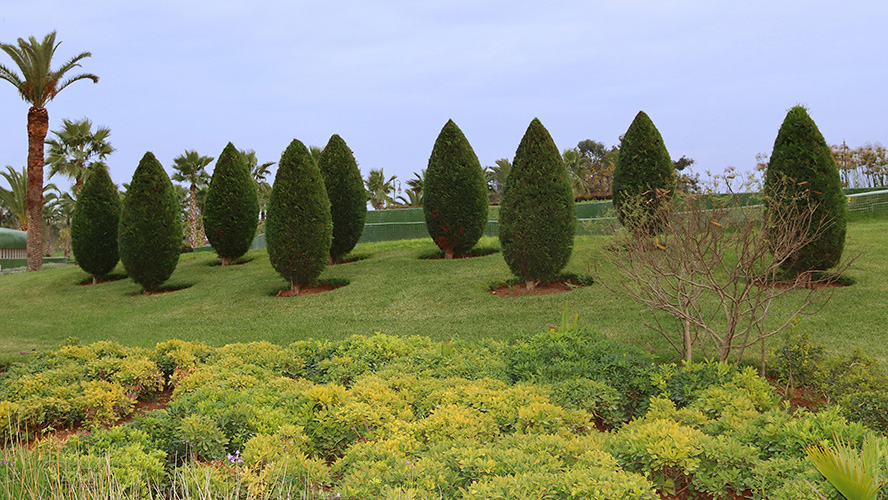
Also, just outside the southern gate of the Touarga wall is the Hassan II Park. Opened in 2018, this huge urban oasis of some 20 hectares has several sports spaces, including football pitches, basketball courts, volleyball courts and a climbing wall, as well as a musical fountain, a playground, two skateparks, a mini-golf course and an open-air theatre, among other things. It’s an ideal place for a pleasant stroll off the beaten tourist track.
Information on the visit
It is very important to bear in mind that you can only visit the Royal Palace of Rabat from the outside. As it is the official residence of the Moroccan monarch, visitors are not allowed inside the palace. They must also show their passport to enter the Touarga area.
As long as you follow the instructions of the security staff (who are present throughout the complex), you can visit the site on your own (open from Monday to Sunday from 9.00 to 17.00). Various guided tours of the city’s main attractions also include a stop at the Royal Palace, where the guides often share historical facts and anecdotes about the palace itself.




































































